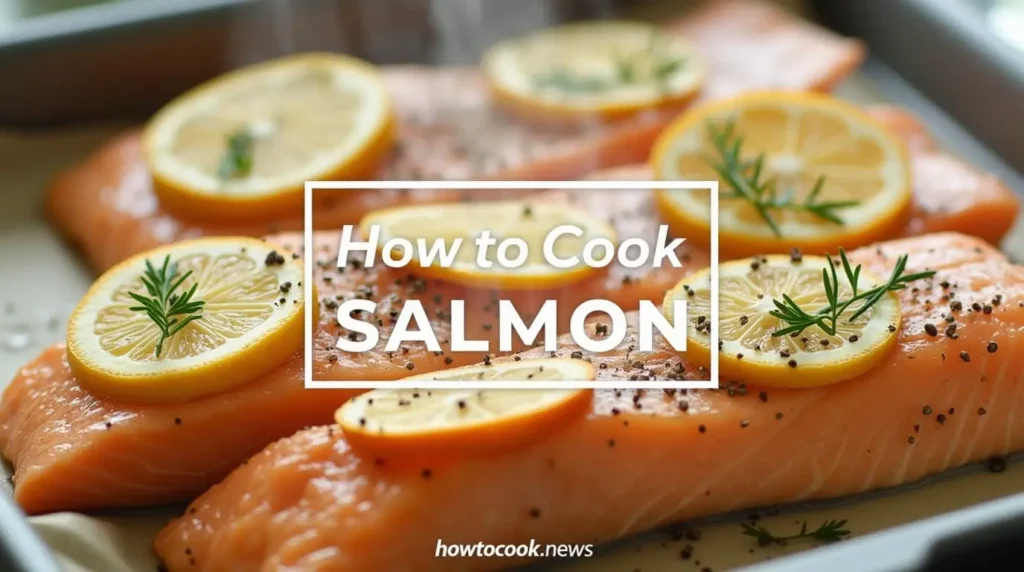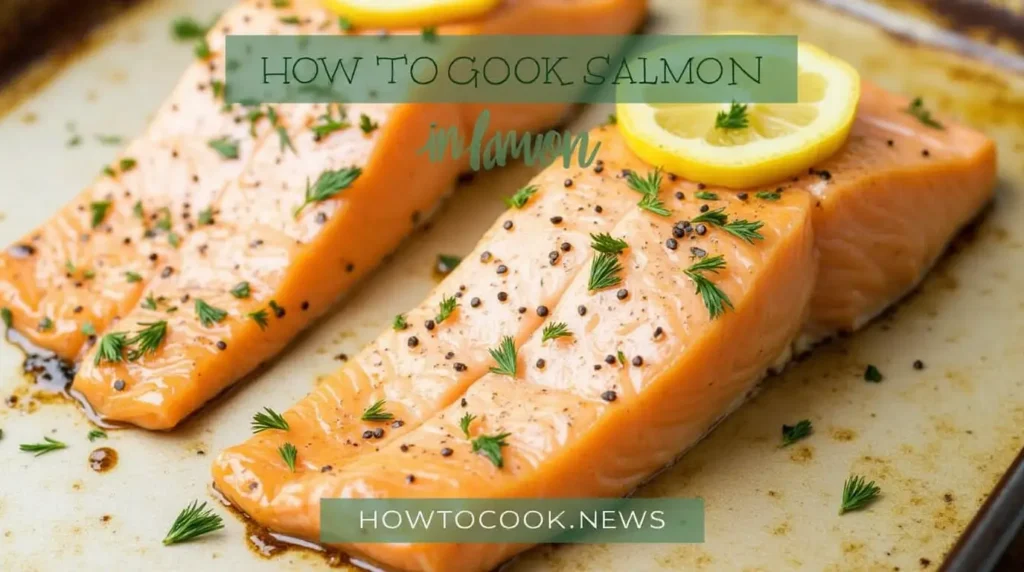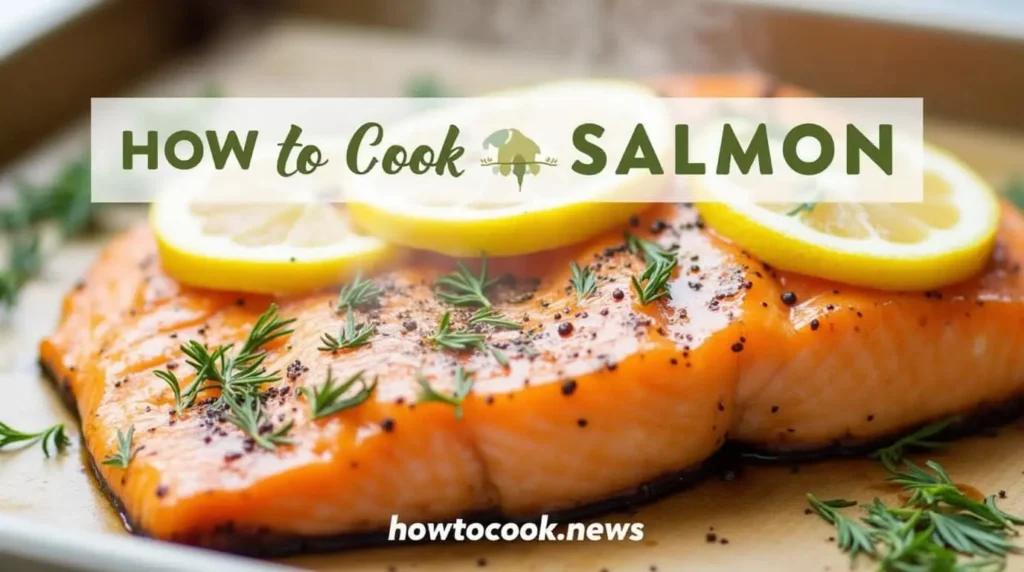HowToCook.news – Your Ultimate Guide to Delicious Cooking!
How to Cook Salmon in the Oven
How to Cook Salmon 🐟 in the Oven
Table of Contents
How to Cook Salmon 🐟 in the Oven: 7 Expert Tips for Perfectly Baked Salmon 🐟

salmon in the oven is one of the best ways to prepare this delicious and healthy fish. With just a few simple steps, you can create a mouth-watering dish that’s tender, flaky, and full of flavor. Whether you’re a beginner in the kitchen or a seasoned chef, knowing the right technique to bake salmon will take your meals to the next level.
In this guide, we’ll share 7 expert tips on how to cook salmon in the oven, ensuring perfect results every time. From preparation to seasoning to baking techniques, we’ll walk you through everything you need to know. Let’s get started!
Why Cook Salmon in the Oven?
Baking salmon in the oven is an easy and convenient method that yields delicious results. When cooked properly, the fish remains juicy on the inside with a beautifully crisp exterior. This cooking method also allows for a variety of seasonings, marinades, and toppings, so you can customize the dish to your liking.
Salmon is rich in healthy omega-3 fatty acids, making it an excellent choice for a nutritious meal. It’s also quick to prepare and pairs well with a wide range of side dishes, making it ideal for both everyday meals and special occasions.
1. Choosing the Right Salmon for Oven Baking
The first step to cooking salmon in the oven is choosing the right type of salmon. There are two main varieties to consider:
- Atlantic Salmon: Often farmed, Atlantic salmon has a mild flavor and a tender texture. It’s a great option for beginners who are new to cooking salmon.
- Wild-Caught Salmon: This variety has a firmer texture and a stronger flavor, making it perfect for those who love a more pronounced fish taste.
When buying salmon for baking, choose skin-on fillets if possible. The skin helps to keep the fish moist during baking and adds flavor. However, you can also use skinless fillets if you prefer.
2. Preparing the Salmon for the Oven

Before cooking salmon in the oven, it’s important to prepare the fish properly to ensure the best texture and flavor. Here’s how you should get started:
Step 1: Thaw the Salmon (if frozen)
If you’re using frozen salmon, you’ll need to thaw it first. The best way to do this is to place the fish in the refrigerator overnight. If you’re short on time, you can also place the salmon in a sealed bag and thaw it under cold running water for about 30 minutes.
Step 2: Pat Dry
Once the salmon is thawed (or if you’re using fresh salmon), pat it dry with a paper towel. Removing excess moisture is crucial, as it helps the salmon cook evenly and prevents it from steaming in the oven.
Step 3: Season the Salmon
Seasoning is key to making salmon in the oven taste amazing. Here’s a simple seasoning method:
- Olive oil: Drizzle the salmon with olive oil for a rich flavor and to keep it moist.
- Lemon juice: Fresh lemon juice adds a zesty kick and enhances the fish’s natural flavor.
- Garlic: Minced garlic or garlic powder gives a savory punch.
- Salt and pepper: Don’t forget the basics! Salt and pepper are essential for seasoning.
Feel free to experiment with different herbs and spices, such as dill, parsley, thyme, or rosemary, to create your flavor profile.
3. Baking Salmon in the Oven
Now that your salmon is seasoned and ready to go, it’s time to bake it! Here’s how to achieve perfectly cooked salmon in the oven:
Step 1: Preheat the Oven
Preheat your oven to 375°F (190°C). This temperature is perfect for baking salmon to ensure it cooks evenly without drying out.
Step 2: Prepare the Baking Sheet
Line a baking sheet with parchment paper or lightly grease it with olive oil to prevent the salmon from sticking. This also makes cleanup much easier!
Step 3: Arrange the Salmon on the Sheet
Place the salmon fillets on the prepared baking sheet, skin-side down. Ensure that the fillets are spaced out and not overlapping for even cooking.
Step 4: Bake the Salmon
Place the baking sheet in the preheated oven and bake the salmon for 12-15 minutes (depending on the thickness of the fillets). A general rule of thumb is to bake salmon for 10 minutes per inch of thickness. For example, a 1-inch thick fillet will take about 10 minutes to bake.
To check if the salmon is done, gently press the fish with a fork. If it flakes easily, it’s ready! The salmon should also be opaque in color and slightly browned on the edges.
4. How to Know When Your Salmon is Done

The key to cooking salmon in the oven is not overcooking it. Here are a few indicators that your salmon is cooked to perfection:
- Flaky texture: When the salmon is cooked, it should easily flake apart with a fork.
- Internal temperature: Use a meat thermometer to check for doneness. The internal temperature of fully cooked salmon should be 145°F (63°C).
- Color: The flesh of the salmon should turn from translucent to opaque and should have a vibrant pinkish-orange color.
If you prefer your salmon to be a bit more well-done, you can extend the baking time by an extra 1-2 minutes, but be careful not to overdo it as this can cause the fish to dry out.
5. Enhancing the Flavor of Your Baked Salmon
While salmon in the oven is delicious on its own, you can add extra flavors to elevate the dish. Here are some ideas:
- Garlic butter sauce: Drizzle melted garlic butter over the salmon for added richness.
- Herb crust: Mix breadcrumbs with herbs like parsley and dill, then sprinkle over the top of the salmon before baking for a crispy topping.
- Honey glaze: Brush the salmon with honey or maple syrup for a sweet and savory flavor.
You can also serve your baked salmon with a side of roasted vegetables, quinoa, or a fresh salad to complete the meal.
6. Serving Suggestions for Baked Salmon
There are endless possibilities when it comes to serving salmon baked in the oven. Here are some side dishes that complement the rich flavors of the fish:
- Steamed asparagus: The crispness of asparagus pairs beautifully with the tender salmon.
- Crispy roasted potatoes: Potatoes are a perfect side to soak up the juices from the salmon.
- Rice pilaf: A flavorful rice pilaf with herbs makes a great base for the salmon.
For a lighter meal, serve your salmon with a side of mixed greens or a Greek yogurt dip for a refreshing contrast.
7. Common Mistakes to Avoid When Baking Salmon
While baking salmon in the oven is a straightforward process, there are a few common mistakes that you should avoid:
- Overcooking the salmon: Keep a close eye on the salmon to prevent it from becoming dry and tough.
- Using the wrong temperature: Too high of a temperature can cause the salmon to burn on the outside while remaining raw on the inside.
- Skipping the seasoning: Salmon has a delicate flavor that can be enhanced with the right seasonings. Don’t skip this crucial step!
Conclusion: Perfect Salmon Every Time
Cooking salmon in the oven is an easy, healthy, and flavorful way to enjoy this nutrient-packed fish. By following these simple steps and using the right seasonings and techniques, you can create a perfectly baked salmon that’s tender, juicy, and bursting with flavor. Whether you’re cooking for yourself or serving a crowd, oven-baked salmon is sure to impress.




